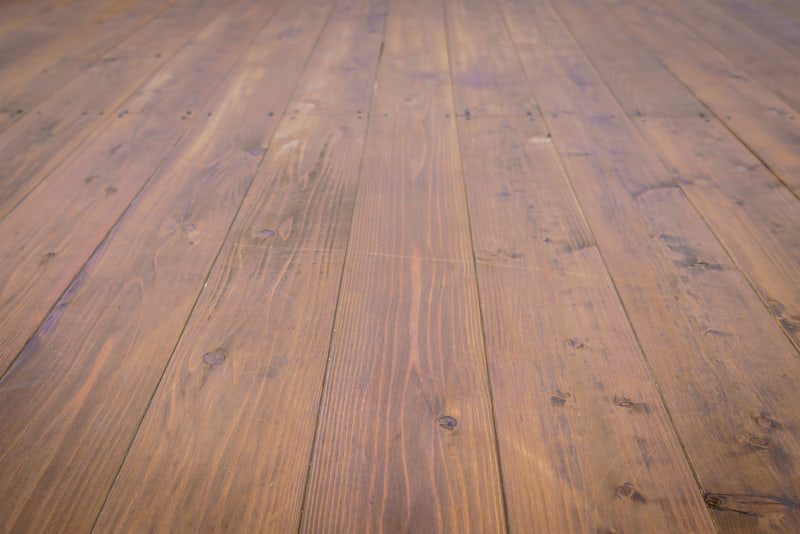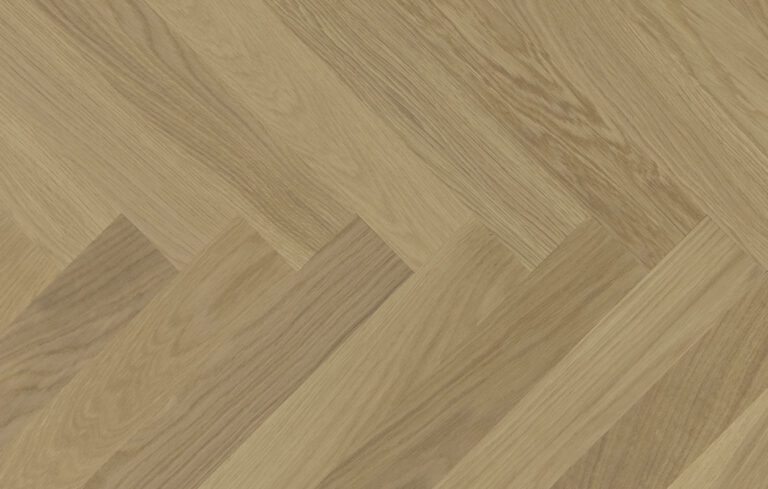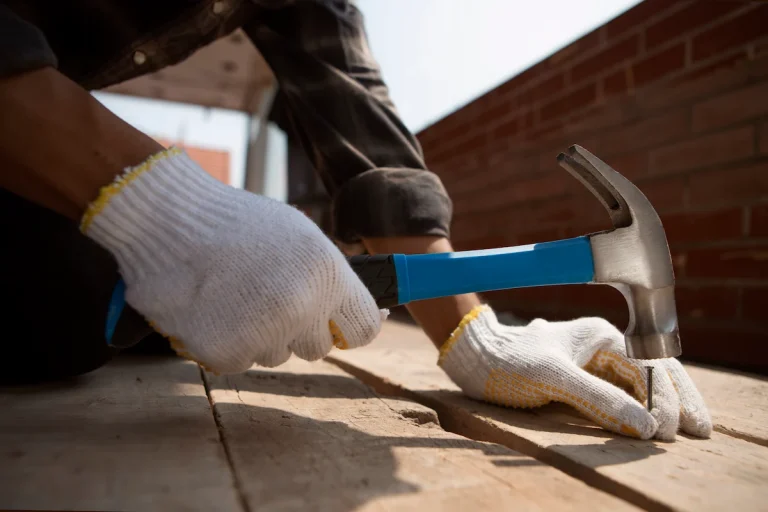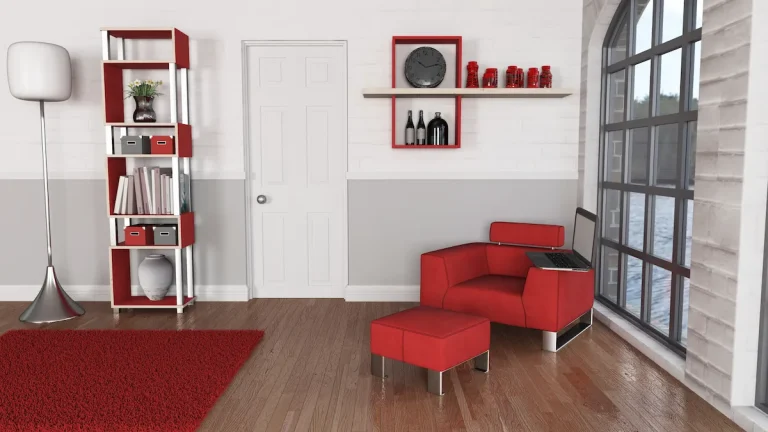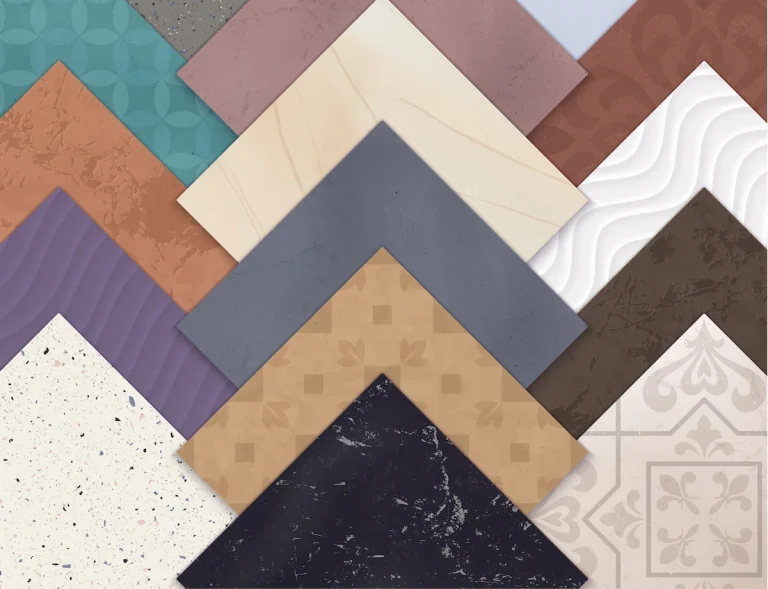Wooden floors represent a timeless choice for any residence, providing warmth, elegance, and durability. To maintain their optimal appearance, proper treatment, including sanding and floor cleaning, is essential. This discussion examines the nature of wooden floor treatment, its significance, and the various methods available, including staining, sealing, and waxing. Additionally, it will explore the use of floor paint and varnish.
Also, It will guide you in selecting the appropriate treatment and outline the necessary maintenance steps. With the right knowledge, one can ensure that wooden floors, including hardwood floors and laminate floors, remain aesthetically pleasing and functional for years to come.
What Is Wooden Floor Treatment?
Wooden floor treatment encompasses a range of processes and products aimed at enhancing the appearance, durability, and longevity of wooden floors, including hardwood and engineered wooden surfaces. These treatments may involve oil finishes, wood stains, varnishes, and floor paint that safeguard the natural grain of the wood while imparting resistance to wear and tear.
A comprehensive understanding of wooden floor treatments, including the use of primer, undercoat, and topcoat, is crucial for homeowners seeking to improve the aesthetics of their floors and ensure effective maintenance over time.
Furthermore, eco-friendly products have become increasingly available in the market, providing sustainable options for individuals who are mindful of their environmental impact and looking for easy maintenance solutions.
The Importance of Wooden Floor Treatment
The treatment of wooden floors is essential for preserving both the aesthetic and functional qualities of these surfaces, particularly hardwood floors. Proper treatment ensures their longevity and resilience against everyday wear and tear, especially in high traffic areas.
By utilising various protective treatments, homeowners can maintain the natural grain of the wood, enhance its visual appeal, and prevent potential damage from high foot traffic, moisture, and UV exposure. Effective floor care not only contributes to a superior finish but also reduces the necessity for extensive restoration efforts in the future, making it an essential part of home improvement.
The Benefits of Wooden Floor Treatment
The advantages of wooden floor treatment are numerous, as it markedly enhances both the appearance and durability of wooden floors, ensuring their resilience against daily wear and tear, and making them easy to clean. Regular treatment safeguards the surface of the floorboards, accentuating the natural grain while providing a durable finish capable of withstanding high foot traffic and moisture. Effective maintenance and treatment can also prevent the necessity for more extensive restoration, ultimately saving both time and costs.
Plus the aesthetic enhancement and robust nature of treated wooden floors, several notable advantages merit attention:
- Enhanced Aesthetics: Treatments amplify the natural beauty of wood, imparting a glossy finish that elevates the overall appearance of the space.
- Increased Durability: The application of treatments strengthens the wood, making it less susceptible to scratches and dents, thereby prolonging its lifespan.
- Improved Resistance: A well-treated floor offers superior resistance to environmental factors such as humidity and temperature fluctuations, minimising the risk of warping or buckling.
Ahead of treatment, methods such as chemical stripping are employed to prepare the surface by removing old finishes and impurities, which ensures optimal adhesion of new coatings.
Ultimately, establishing a dedicated maintenance routine—comprising regular cleaning and occasional refinishing—can greatly enhance the longevity of wooden floors and preserve their inherent charm.
Types of Wooden Floor Treatment
There are various types of wooden floor treatments available, each designed to fulfil specific purposes in the maintenance and enhancement of wooden floors, including floorboards and laminate floors. Treatments such as oil, wood stain, varnish, sealing, and waxing are commonly employed to protect and preserve both hardwood and engineered wooden floors.
Each method provides distinct advantages, such as deep penetration for increased durability or surface protection for a glossy finish, including the use of diamond hard and acrylic varnish, enabling homeowners to select the most suitable option based on their individual requirements.
1. Staining
Staining is a widely used method in the treatment of wooden floors, aimed at enhancing the natural grain of the wood while providing a range of rich colour options, including both dark and light stains that complement various home aesthetics, creating a quality finish. By penetrating the wood’s surface, stains create a protective layer that safeguards against future wear, making them suitable for both new and refinished hardwood floors, achieving a quality finish.
Preparation is critical in the staining process and begins with ensuring that the surfaces are clean, properly sanded, and free of any previous finishes that may hinder adhesion.
The types of stains available vary, encompassing water-based and oil-based formulas, each offering distinct advantages such as quicker drying times or deeper penetration. Furthermore, application techniques can differ, ranging from brushes and rollers to sprayers, which facilitate diverse finishes and textures.
Selecting the appropriate stain is essential, as it not only influences the overall visual appeal of the wooden floor but also affects the durability and integrity of the wood, ensuring a long-lasting quality finish. Therefore, it is vital to choose a stain that reflects personal style while providing long-lasting protection. Achieving this balance ensures that the aesthetic qualities of the wood are enhanced without compromising its natural beauty.
2. Sealing
Sealing wooden floors is crucial for providing an additional layer of protection against moisture, dirt, and daily wear, particularly in high-traffic areas of residential properties, ensuring a protective layer. This process helps to preserve the integrity of the wood while facilitating floor maintenance through enhanced water resistance and ease of cleaning.
The sealing process is instrumental in ensuring the longevity of hardwood surfaces. By applying an appropriate sealant, homeowners can effectively extend the lifespan of their wooden floors while simultaneously enhancing their aesthetic appeal. There are various sealing products available, including polyurethane, oil-based finishes, and water-based sealants, each offering distinct advantages.
- Polyurethane: Renowned for its durability and resistance to scratches, making it particularly suitable for households with pets.
- Oil-based finishes: These provide a rich, deep sheen and have a longer drying time, which can contribute to achieving a smoother finish.
- Water-based sealants: These sealants dry quickly and emit less odour, making them a preferred option for indoor applications.
Application methods range from topical coatings to penetrating sealers, each requiring different tools and techniques. Homeowners often discover that regular maintenance, in conjunction with the appropriate sealing product, significantly impacts the overall care and upkeep of their floors, making it easier to maintain a fresh and vibrant appearance, and ensuring easy maintenance.
3. Waxing
Waxing is a traditional method for treating wooden floors that not only enhances their visual appeal with a beautiful sheen but also provides a protective layer to prevent scratches and scuffs. This straightforward maintenance technique enables homeowners to restore the lustre of their floors and extend their lifespan without the need for extensive restoration efforts.
To initiate the waxing process, proper preparation is essential. Begin by thoroughly cleaning the wooden surface to eliminate dust, dirt, and any residual products that may impede the wax’s adherence. This can be achieved using a gentle cleaner specifically formulated for wood surfaces.
Once the floors are clean, the application of the wax can commence. Utilising a clean, dry mop or applicator, apply the wax evenly, working in small sections to ensure a uniform coat without puddling, achieving a clear gloss or satin finish. It is important to allow the wax to dry completely, which typically takes approximately 30 minutes to an hour, before proceeding with a second coat if desired. Ongoing maintenance is also crucial; regularly dusting and using a damp mop will help to prolong the longevity of the wax.
Pros of Waxing: Enhances shine, suitable for various wood types, and provides a protective barrier against wear.
Cons of Waxing: Requires regular reapplication, can become slippery when wet, and may not be as durable as other treatment methods.
In comparison to alternative treatments, such as polyurethane finishes or oil treatments, waxing offers a more classic aesthetic but necessitates more frequent upkeep to maintain its protective layers and overall appearance, ensuring stain-resistant and water-resistant properties. Homeowners should carefully consider these factors when selecting the most appropriate care method for their wooden floors, especially when refurbishing or redecorating their homes.
4. Oil Finishing
Oil finishing, particularly with linseed oil, is a preferred method for treating wooden floors due to its ability to penetrate deeply into the wood, enhancing its natural appearance while providing a durable protective layer. This approach not only preserves the aesthetic appeal of wooden surfaces but also supports eco-friendly practices in home improvement. Additionally, using linseed soap for cleaning can help maintain the floor’s finish.
When evaluating treatment options for wooden floors, it is essential to consider the benefits of oil finishes. These treatments offer a unique combination of aesthetic enhancement and long-lasting protection, allowing the wood to display its distinctive grains and rich colours. Moreover, treatments like linseed wax and Osmo Polyx-Oil can provide additional protective coatings that enhance the wood’s durability and appearance.
The application process is straightforward: it typically involves thoroughly cleaning the surface, applying the oil with a cloth or brush, and buffing it to achieve a uniform sheen.
- Natural Appearance: The absorbed oil yields a matte finish that accentuates the wood’s texture, similar to what you would achieve with Osmo Polyx-Oil.
- Protective Qualities: It provides protection against moisture and stains, thereby extending the lifespan of the flooring. For added protection, consider using Diamond Hard Floor Varnish which is known for its water-resistant and stain-resistant properties.
- Maintenance: Regular reapplication is minimal; a simple buffing and re-oiling every few years can maintain its fresh appearance. For additional care, linseed soap can be used for routine cleaning to preserve the finish.
In comparison to other treatments, such as polyurethane, which can create a plastic-like surface, oil finishing preserves the authentic feel of the wood. Therefore, for those who prioritise both beauty and sustainability, this method emerges as a superior choice. Another alternative to consider is Perfect Finish Diamond Hard Floor Varnish, which offers robust protection while maintaining the wood’s natural look.
5. Varnishing
Varnishing is a widely recognised method for treating wooden floors, as it creates a transparent protective layer over the wood. This process yields a glossy finish that not only highlights the wood’s natural beauty but also provides a durable surface. The treatment effectively protects against scratches, moisture, and stains, making it an ideal choice for high-traffic areas. For example, Diamond Hard Floor Varnish is excellent for such purposes.
When contemplating varnishing, it is crucial to examine the various types of varnishes available, including water-based and oil-based options. Water-based varnishes typically dry more quickly and emit low levels of odour, rendering them suitable for indoor applications where proper ventilation is essential. In contrast, oil-based varnishes penetrate the wood more deeply, offering a richer finish, although they may require a longer curing time. For a more eco-friendly option, consider water-based varnishes which are also effective in providing a durable finish.
The application techniques employed also significantly influence the achievement of optimal results. Utilising a brush or roller can facilitate an even finish, while spray application provides a smooth coat in a shorter timeframe. Adhering to the manufacturer’s guidelines regarding the number of coats is imperative; generally, two to three coats are recommended for maximum protection. For DIY enthusiasts, these methods offer convenience and efficiency in achieving professional results.
Varnishing not only enhances the aesthetic appeal of the wood but also has a substantial impact on the maintenance of the floor. A properly applied varnish layer simplifies routine cleaning and reduces the frequency of refinishing required over time, thereby extending the lifespan of the floor. Using products like Perfect Finish Diamond Hard Floor Varnish can further ensure long-lasting protection.
How to Choose the Right Treatment for Your Wooden Floor
Selecting the appropriate treatment for wooden flooring necessitates a thorough evaluation of several factors, including the type of wood, the desired aesthetic, and the level of maintenance required. Factors such as whether you want to apply a clear varnish or a dark stain can determine the final look of your flooring.
Various treatments, such as staining, sealing, or varnishing, address diverse needs and preferences, allowing homeowners to choose an option that not only enhances durability but also aligns with their visual objectives. Using products like Multi Purpose Wood Filler can help in preparing the surface before applying these treatments.
Furthermore, the availability of eco-friendly options has increased, offering sustainable alternatives for environmentally conscious homeowners. If you’re aiming for a water-resistant finish, ensure to choose the appropriate products.
Steps for Wooden Floor Treatment
The process of treating wooden floors encompasses several essential steps to ensure a successful application and optimal results. These steps include:
1. Preparation
Preparation constitutes a crucial initial step in the process of treating wooden floors, as it ensures that the surface is adequately cleaned and primed for the application of treatment products. This process involves vacuuming the surfaces to eliminate dirt and debris, which can interfere with the adhesion of treatment products and ultimately impact the overall finish and durability.
Plus vacuuming, it is essential to gather the appropriate tools and materials to facilitate effective cleaning. Using a microfibre mop in conjunction with a suitable wood floor cleaner can effectively remove grime without damaging the existing finish. Before the application of any treatment, it is imperative that the floors are devoid of waxes or previous coatings that may compromise the efficacy of the new treatment.
- Begin by sweeping or vacuuming to remove loose particles.
- Employ a damp microfibre mop to thoroughly clean the surface. Using linseed soap can enhance the cleaning process without damaging the wood.
- Inspect the area for any damage or scratches that may necessitate pre-treatment repairs. Applying a suitable wood filler can help in addressing these issues effectively.
Proper preparation is of great significance, as it not only provides a clean foundation for the treatment but also contributes to prolonging the lifespan of the wood flooring through diligent maintenance practices.
2. Sanding
Sanding is a critical step in the wooden floor treatment process, as it facilitates the creation of a smooth and even surface, which is essential for the proper adherence and effectiveness of treatment products.
It is important for homeowners to understand the various types of sanders available in order to achieve a flawless finish. Beginning with a coarse grit, such as 40 or 60, effectively removes the worn finish and any imperfections present on the surface. For larger areas, using an industrial drum sander can expedite the process. Gradually transitioning to higher grit levels, such as 80 or even 120, further smooths the surface and closes the wood’s grain.
For optimal results, employing a technique that involves moving the sander in the direction of the wood grain is advisable, as this ensures a natural appearance while minimising the risk of scratches. Regular vacuuming during the sanding process is essential to control dust accumulation, thereby improving visibility and allowing for a more consistent application of the final treatment. Also, using a floor sander designed for residential projects can be more manageable for DIY enthusiasts.
- Coarse Grit: 40-60 (removal of old finish)
- Medium Grit: 80 (smoothing)
- Fine Grit: 120 (final polishing)
In conclusion, neglecting the sanding phase can compromise the integrity of the entire floor treatment process, potentially leading to uneven finishes and premature wear. It’s crucial to use the right tools, such as a floor sander and wood filler for repairs, to ensure the surface is adequately prepared for the final treatment.
3. Cleaning
Cleaning the wooden floor is an essential procedure that follows the sanding process, as it effectively removes dust and debris generated during sanding, thereby ensuring a clean surface for subsequent treatment application. Employing proper floor cleaning techniques, including vacuuming and mopping, is critical for achieving a flawless finish and maintaining the integrity of the flooring. Using a high-quality vacuum cleaner with a HEPA filter can ensure thorough cleaning.
To efficiently eliminate dust, it is advisable to utilise a high-quality vacuum cleaner equipped with a HEPA filter. This type of vacuum ensures that even the finest particles are captured, thereby preventing them from settling back onto the floor surface.
Following the vacuuming process, mopping with a damp microfibre cloth or mop is recommended to remove any remaining dust and create a smooth, clean area. Regular maintenance practices, such as these, are vital for prolonging the lifespan of wooden floors and enhancing their overall appearance.
- Vacuuming: Use a vacuum with a HEPA filter for efficient dust capture.
- Mopping: A damp microfibre mop can assist in removing residual dust.
- Drying: Ensure that floors are adequately dried after cleaning to prevent moisture damage.
A thorough cleaning process not only prepares the surface for treatment but also significantly impacts the aesthetic appeal and durability of the flooring.
4. Applying Treatment
Applying the selected treatment is a crucial step in the wooden floor treatment process, whether it entails varnishing, oiling, or waxing, as this directly influences both the final appearance and the protection of the floor. Homeowners should adhere to the manufacturer’s instructions and utilise appropriate tools to ensure an even application, thereby achieving optimal results. For instance, using clear varnish can retain the wood’s natural look while providing a protective layer.
Ahead of commencing the treatment application, it is essential to adequately prepare the wooden surface. This preparation includes cleaning, sanding, and making any necessary repairs to ensure the best possible outcome. For repairs, using a high-quality wood filler can help achieve a smooth and even surface.
The following tips should be considered:
- Ensure the room is well-ventilated to facilitate proper drying.
- Utilise a high-quality applicator that is specifically designed for the chosen treatment type.
- Apply thin, even coats to prevent drips and streaks.
- Allow sufficient drying time between each coat, in accordance with the manufacturer’s guidelines.
Upon successfully applying the treatment, post-application care becomes equally important. This may involve:
- Avoiding heavy foot traffic for the minimum period recommended by the manufacturer.
- Utilising furniture pads and area rugs to protect the finish.
- Regularly cleaning the treated floor with products suitable for the specific treatment type.
By observing these precautions and following the instructions, homeowners can significantly enhance the longevity and aesthetic appeal of their wooden floors, making it easier to redecorate when needed.
5. Drying and Curing
Drying and curing represent critical final steps in the treatment process for wooden floors, as they ensure that the applied treatment adheres effectively and achieves its intended protective qualities, making the floors more water resistant. Allowing adequate time for drying, followed by curing, is essential for maximising the durability and longevity of the floor.
The importance of understanding the significance of drying and curing cannot be overstated. The complexities of these processes are heavily influenced by environmental factors such as temperature and humidity. For example, elevated humidity levels may extend drying times, while low temperatures can impede the curing process entirely. Such conditions could result in inadequate adhesion and diminished protective qualities of the finish.
Optimal drying conditions typically occur within a temperature range of 18°C to 27°C. Additionally, maintaining a relative humidity level of approximately 30-50% is crucial.
Proper maintenance during this phase is vital; neglecting these steps can lead to a compromised surface that fails to withstand wear and tear. Therefore, ensuring consistent monitoring of environmental conditions throughout this period can significantly impact the final outcome.
How to Maintain Treated Wooden Floors
Maintaining treated wooden floors is essential for extending their lifespan and preserving their aesthetic appeal and protective properties. Implementing regular maintenance practices, which encompass appropriate cleaning methods and protective treatments, can prevent damage and ensure that wooden floors maintain their optimal appearance for many years.
1. Regular Cleaning
Regular cleaning is essential for the maintenance of treated wooden floors, as it effectively removes dirt, grime, and debris that can dull the surface and compromise the protective layer. Employing gentle cleaning methods ensures that the durable, stain resistant finish remains intact while preserving the wood’s aesthetic appeal.
To achieve optimal cleanliness without damaging the finish, it is advisable to adhere to a consistent cleaning schedule. This schedule may include the following practices:
- Installing scratch-resistant pads on furniture legs
- Utilising a microfiber mop or cloth or vacuum surfaces that effectively captures dirt without causing scratches
- Selecting pH-neutral cleaners specifically formulated for wooden surfaces, while avoiding harsh chemicals that can deteriorate finishes
Homeowners should refrain from using steam cleaners or excessive water, as these can warp the wood. By emphasising regular maintenance, one not only enhances the floor’s appearance but also prolongs its lifespan, thereby making it a worthwhile investment.
2. Avoiding Harsh Chemicals
Avoiding harsh chemicals when maintaining treated wooden floors is essential for preserving their protective finishes and ensuring the longevity of the wood. Choosing eco-friendly products enables effective cleaning without compromising the integrity of the treatment.
These mild alternatives not only protect the floor’s natural beauty but also contribute to a healthier indoor environment. By opting for eco-friendly cleaning solutions, one can minimise the release of volatile organic compounds (VOCs), which can adversely affect indoor air quality and overall ecosystems. This conscious decision reflects a commitment to sustainability and offers numerous benefits:
- Protection of finishes: Eco-friendly cleaners are specifically formulated to maintain the sheen and texture of wood without stripping away protective layers.
- Healthier interiors: With reduced levels of harmful chemicals, the air quality remains cleaner, promoting better respiratory health for occupants.
- Environmental impact: Utilising biodegradable products helps to reduce the carbon footprint and supports the preservation of natural resources.
In summary, the selection of cleaning solutions is pivotal in maintaining the aesthetic and structural integrity of wooden floors while being considerate of environmental sustainability.
3. Repairing Any Damage
Promptly addressing any damage to treated wooden floors is crucial for maintaining their appearance and durability. Utilising wood filler and protective coatings effectively resolves minor scratches and dents. Timely repairs not only prevent further deterioration but also preserve the overall aesthetic appeal of the flooring.
For homeowners, early recognition of signs of damage can lead to significant benefits. Addressing minor scratches with an appropriate wood filler not only creates a smoother surface but also ensures the longevity of the floor’s finish. The process begins with thoroughly cleaning the affected area to remove any dirt and debris.
Subsequently, apply the wood filler in accordance with the manufacturer’s guidelines. While it dries, it is advisable to inspect for other potential issues that may require attention. Once the repairs are complete, reapplying a protective coating will help safeguard against future wear. By integrating these steps into regular maintenance routines, the lifespan of the flooring can be significantly extended.
- Inspect regularly for scratches and dents.
- Use high-quality wood fillers that match the floor’s finish.
- Reapply protective coatings every few years to maintain sheen.
Wooden floor treatment is crucial for preserving the elegance and longevity of your floors. Regular treatment not only protects your wood from wear and tear but also enhances its natural beauty and shine. Whether it’s polishing, sealing, or restoring, the right treatment can keep your floors looking like new for years to come.
At TEKA Flooring, we offer high-quality flooring, along with expert advice on how to care for your floors. For added convenience, our TEKA Cleaning service ensures that your floors are properly maintained and kept in top condition.
Trust TEKA Flooring and TEKA Cleaning for all your wooden floor needs—visit us today to get the best products and services to keep your floors beautiful and protected!
Read also:


























